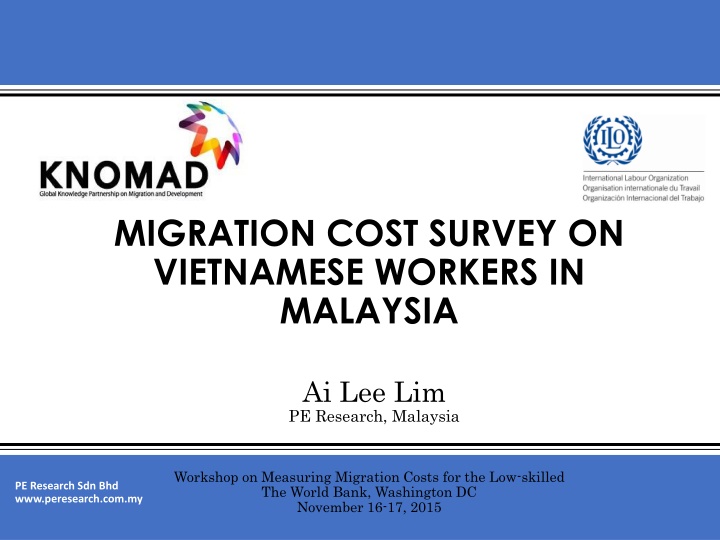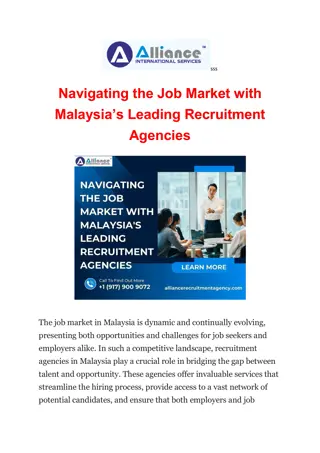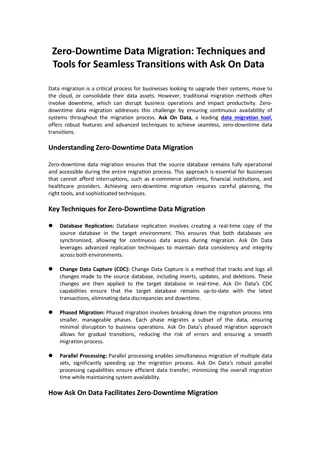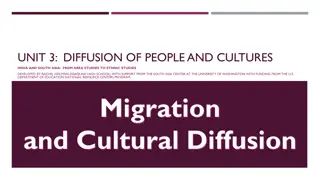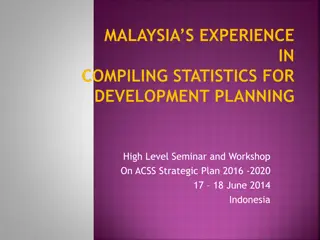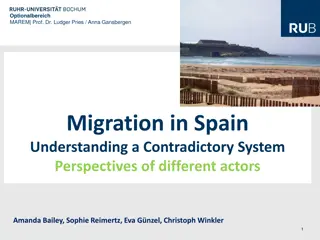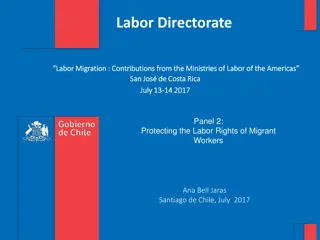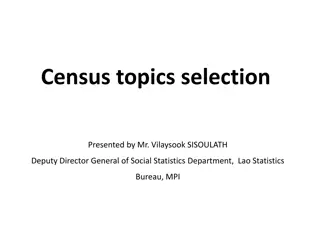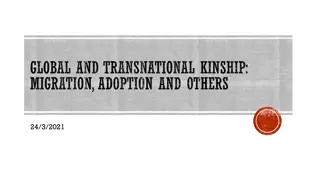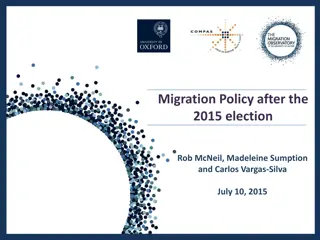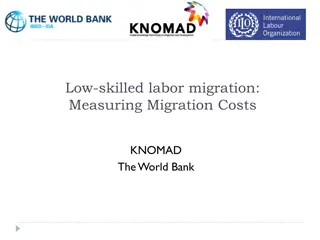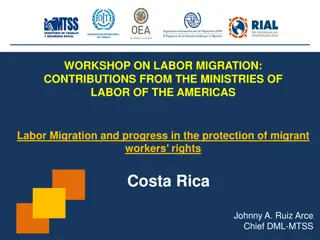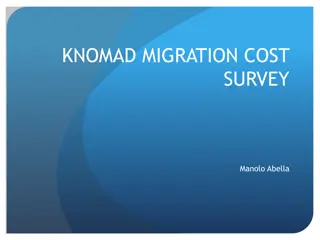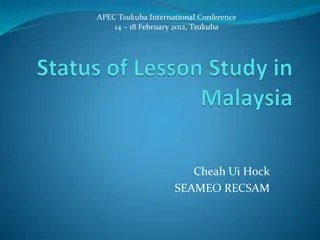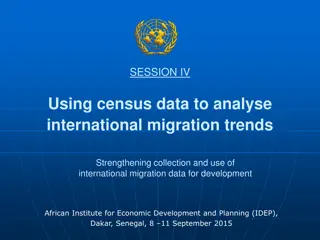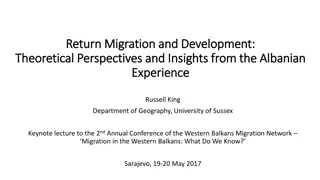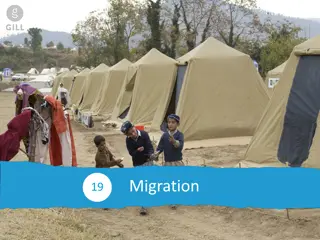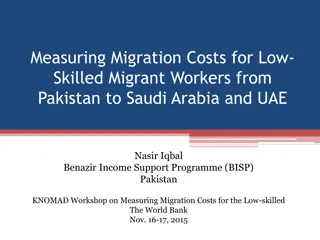Study on Vietnamese Workers in Malaysia: Migration Cost Survey and Demographics
Research conducted by PE Research in Malaysia focuses on the migration cost survey of Vietnamese workers in Malaysia, outlining sampling frameworks, methods of survey, and the distribution of foreign workers across sectors. As of June 2015, there were 56,591 Vietnamese workers registered under the temporary employment visa, with a significant presence in the manufacturing sector. The report provides a detailed breakdown of foreign workers by nationality and sector, shedding light on the labor dynamics in Malaysia.
Download Presentation

Please find below an Image/Link to download the presentation.
The content on the website is provided AS IS for your information and personal use only. It may not be sold, licensed, or shared on other websites without obtaining consent from the author.If you encounter any issues during the download, it is possible that the publisher has removed the file from their server.
You are allowed to download the files provided on this website for personal or commercial use, subject to the condition that they are used lawfully. All files are the property of their respective owners.
The content on the website is provided AS IS for your information and personal use only. It may not be sold, licensed, or shared on other websites without obtaining consent from the author.
E N D
Presentation Transcript
MIGRATION COST SURVEY ON VIETNAMESE WORKERS IN MALAYSIA Ai Lee Lim PE Research, Malaysia Workshop on Measuring Migration Costs for the Low-skilled The World Bank, Washington DC November 16-17, 2015 PE Research Sdn Bhd www.peresearch.com.my
Outline of presentation Sampling Frameworks to Survey Vietnamese Migrants In Malaysia Computer-assisted Personal Interview Method 2
As of June 2015, there are 2.25 million foreign workers registered under the temporary employment visa scheme (Pas Lawatan Kerja Sementara PLKS) in Malaysia 1,000,000 876,339 900,000 800,000 700,000 566,184 600,000 500,000 400,000 277,018 300,000 139,624145,561 200,000 66,52173,214 12,422 100,000 14,03656,591 9197,486 74 9,524 0 Number of Foreign Workers Registered under the Temporary Employment Visa Source: http://myhos.mohr.gov.my/ebook/istatistik3_2015/bil3_2015.pdf 3
56,591 Vietnamese workers registered under PLKS the temporary employment visa as of June 2015 Number of foreign workers registered under the temporary employment visa by sector and nationality as of June 2015, Malaysia Domestic Workers Nationality Construction Manufacturing Services Plantation Agriculture Total Bangladesh 133 105,960 106,350 30,284 19,626 14,665 277,018 Cambodia 4,045 268 3,539 1,048 274 350 9,524 China 231 4,475 527 7,114 45 30 12,422 India 949 9,893 4,007 61,196 24,333 39,246 139,624 Indonesia 106,788 248,790 128,553 42,732 259,561 89,915 876,339 Laos 36 3 22 7 2 4 74 Myanmar 130 20,852 98,332 17,653 2,615 5,979 145,561 Nepal 78 18,886 403,675 116,148 7,223 20,174 566,184 Pakistan 53 29,849 3,828 6,245 8,846 24,393 73,214 Filipina 42,186 4,122 4,663 5,839 4,876 4,835 66,521 Sri Lanka 1,709 177 3,926 1,072 305 297 7,486 Thailand 352 927 358 10,011 557 1,831 14,036 Vietnam 895 5,533 47,626 1,830 114 593 56,591 Others 76 346 142 309 34 12 919 Total 157,661 450,081 805,548 301,488 328,411 202,324 2,245,513 Source: http://myhos.mohr.gov.my/ebook/istatistik3_2015/bil3_2015.pdf 2.52% 4
Out of the 56,591 Vietnamese workers registered under the temporary employment visa, 84% are in the manufacturing sector, 10% in construction Agriculture, 1.0% Plantation, 0.2% Domestic Workers, 1.6% Construction, 9.8% Services, 3.2% Manufacturing , 84.2% Source: http://myhos.mohr.gov.my/ebook/istatistik3_2015/bil3_2015.pdf 5
Malaysian Legislation Relating to Migrant Workers (1) Employment Act Employment Act 1955 1955 Article 60L (1) provides an avenue where the foreign worker have the right to file a complaint to the Director-General of the Labour Department in the event where foreign employee is being discriminated against in relation to a local employee by his employer in respect of the terms and conditions of employment. Article 69 of the Employment Act provides authority for the Director- General to investigate and issue orders based on terms and conditions of contracts, wages, and provisions of the Employment Act Trade Union Act Trade Union Act 1959 1959 Provision of the institution of the Industrial Court for disputes and regulation of collective bargaining Industrial Industrial Relations Act Relations Act 1967 1967 Disallow foreign workers from becoming an office bearer of the trade union, nor forming one. However, it does not forbid them from joining an existing trade union. 6 Source: Malaysian Employers Federation, 2014
Malaysian Legislation Relating to Migrant Workers (2) Immigration Act Immigration Act 1959/63 1959/63 Section 55B laid out the penalties to employer who is found to be hiring foreign workers illegally, which include fine no less than RM10,000 and no more than RM50,000 and/or imprisonment of no more than 12 months for each such worker Section 6(3) stated that an convicted illegal foreign workers shall be liable to a fine not exceeding RM10,000 and/or imprisonment of no more than five years with whipping no more than six strokes Workmen Workmen Compensation Act Compensation Act 1952 1952 Mandatory for employers to insure all workers under an approved scheme Occupational Occupational Safety and Health Safety and Health Act 1994 Act 1994 All employers with more than 5 employees are required to formulate a written Safety and Health Policy of their workplaces 7 Source: Malaysian Employers Federation, 2014
Malaysian Legislation Relating to Migrant Workers (3) Passports Act of Passports Act of 1955 1955 Section 12 (1) consider it an offence for any person without lawful authority to have in his possession any passport issued for the use of some person other than himself National Minimum National Minimum Wage Order 2012 Wage Order 2012 Extended to include all migrant workers in December 2013, where workers will enjoy a minimum wage of RM900 in Peninsular Malaysia Effective from 1 July 2016, the national minimum wage will be increased from RM900 to RM1,000 per month for Peninsular Malaysia and from RM800 to RM920 for Sabah, Sarawak and the Federal Territory of Labuan. The new minimum wage will be implemented in all sectors except for domestic services or domestic maids . Source: http://www.bajet.com.my/2016-budget-speech 8
Terms and Conditions of the Recruitment of Foreign Workers by the Immigration Department of Malaysia Only permitted to work in these sectors - Manufacturing, Construction, Plantation, Agriculture and Services; Quota of foreign workers must be obtained by employers / companies from Ministry of Home Affairs, One Stop Centre (OSC); Age of not less than 18 years and not more than 45 years at the time of application; Certified as fit and healthy by the approved medical centre in the source countries; Not listed as foreign individuals who are prohibited from entering this country under Section 8 (3) of the Immigration Act 1959/1963; and Foreign workers must come from approved source countries. Foreign workers are not allowed to bring their family members to accompany or live in this country; Foreign workers must not work as front liner; Foreign workers are not allowed to change of employers or employment sectors; and Foreign workers are prohibited from marriage with local or foreign citizens. 9 Source: Immigration Department of Malaysia, 2015
Foreign workers must come from approved source countries as below: Gender SECTOR Country Thailand Cambodia Nepal Myanmar Laos Vietnam Philippines Pakistan Sri Lanka Turkmenistan Uzbekistan Kazakhstan F / / / / / / X / / / / / M / / / / / / / / / / / / All Sectors (Construction, Plantation, Agriculture, Services, Manufacturing) Construction (high tension cable only); Services (goldsmith, wholesale/ retail, restaurant-cooks only, metal/ scrap materials and recycling, textiles and barbers); Agriculture; and Plantation India / / Male workers from Indonesia are allowed to work in all sectors except Manufacturing, while female workers from Indonesia are allowed to work in all sectors stipulated. Plantation via G to G agreement Indonesia / / Bangladesh / / 10 Source: Immigration Department of Malaysia, 2015
Foreign workers will only be allowed to enter the country at the authorized entry points using the Visa with Reference (VDR) issued by the Immigration Department and entry visa issued by the Malaysian Attach s Office in the country of origin The issuance of Visit Pass (Temporary Employment) [VP(TE)] to the foreign workers will only be done after they have passed the FOMEMA medical examination within 30 days which can be done at any medical centres registered with FOMEMA. VP(TE) is valid for a period of 12 months. Employers can apply for VP(TE) extension 3 months before the expiry date. Foreign workers are allowed to work in this country on a yearly basis up to 10 years. However, those registered under the 6P Program is allowed to work up to 3 years only. 12
The rate for the levy varies from sector. On top of that, a visa fee will also be incurred and a bond imposed. The rate for the fees differs according to nationality Fee Structure for Levy and Visit Pass (Temporary Employment) in Malaysia based on Sector Fee Structure for Visa and Bond based on Nationality SECURITY BOND (RM) 250.00 500.00 750.00 750.00 750.00 1,000.00 250.00 250.00 750.00 1,500.00 750.00 LEVY (Sabah/ Sarawak) RM1,010.00 NATIONALITY VISA (RM) LEVY SECTOR VP(TE) PROCESS (Peninsular) Indonesia Bangladesh Pakistan Myanmar India Philippines Thailand Cambodia Nepal Vietnam Sri Lanka 15.00 20.00 20.00 19.50 50.00 36.00 Gratis 20.00 20.00 13.00 15.00 Manufacturing RM1,250.00 RM60.00 RM125.00 Construction RM1,250.00 RM1,010.00 RM60.00 RM125.00 Plantation RM590.00 RM590.00 RM60.00 RM125.00 Agriculture RM410.00 RM410.00 RM60.00 RM125.00 Services RM1,850.00 RM1,490.00 RM60.00 RM125.00 Services (island resort) RM1,250.00 RM1,010.00 RM60.00 RM125.00 13 Source: http://www.imi.gov.my/index.php/en/main-services/foreign-worker
Constructing Sampling Framework Extracted the companies: Manufacturing & Construction Penang and Selangor as per the preliminary framework discussed with ILO Data was provided by the Vietnamese consultant Lists of verified labour supply contracts from 2011 to 2013 Statistical data on Vietnamese workers in Malaysia Deleted the repeated entries of factories which requested for Vietnamese workers via more than once Compiled a list of a total of 262 companies which hires Vietnamese workers 142 in the Klang Valley while 120 are in Penang 215 manufacturing 11 construction Calls were made to factories requesting permission to interview the workers This list of companies does not have information on the number of workers that they employ 66 companies informed that they have no Vietnamese workers 26 rejected the request outright 102 firms not contactable and etc Only three companies agreed to the request for interview, but with a condition such as signing of a non-disclosure agreement, subject to the factory s production schedule, and the presence of a supervisor where the interviews are to be conducted. 15
The Construction Labour Exchange Centre Berhad (CLAB), an organisation established by the Construction Industry Development Board (CIDB) gave another list of construction companies which hired Vietnamese workers in Malaysia Construction Labour Exchange Centre Berhad (CLAB) - List of construction companies which hired Vietnamese workers in Malaysia A list of 49 construction companies was made Only one responded favourably by giving us the contact number of the workers representative, but did not agree to a formal appointment during work hours. As such, based on the data provided by the consultants, we have not been As such, based on the data provided by the consultants, we have not been able to construct a comprehensive list of companies that hired Vietnamese able to construct a comprehensive list of companies that hired Vietnamese workers. workers. 16
A snowballing and cluster-based approach was employed In view of the lack of response by the factories for interviews, a large majority could not be contacted, could not be reached and rejected the interview. Only three firms had consented to the interview. Based on contacts that were established, the respondents would then recommend others to be interviewed. This kind of snowballing approach is useful for hard-to-find populations and where a sampling frame could not be developed, as it was in this case. Through this method, after fulfilling the specified quota by sector, the population was further disaggregated by location and types of contacts. Penang and Klang Valley were selected as primary locations since these two states reportedly have the highest concentration of Vietnamese workers. In addition, the population was divided into three types of contacts, viz. individuals, community groups and factories. Initial contacts were made through organisations and community groups, including trade unions, NGOs and churches, and individuals with established contacts with Vietnamese workers. Gender balance was taken into account while conducting the interviews. 17
The revised quota was set at 90% of workers from the manufacturing sector with 10% of workers from the construction sector This is revised from the previously discussed 80% manufacturing and 20% construction quotas following from the information gathered which seems to suggest that the construction workers are scattered across the country in small numbers. As such, although the office of the companies we contacted might be based in Selangor/Kuala Lumpur, the workers might be despatched to other more remote areas depending on the location of the construction sites. 18
A few reasons for the reluctance of the factories to participate in this survey: They are concerned that they might be negatively implicated in the survey They do not see the direct benefit of participating in the survey. The factories run a very tight production schedule. As such, releasing the workers for even 30 minutes can result in output delays and incur costs to the employers. 19
Finding workers that fit the criteria has been no easy task Our initial approach has been to fix appointment with factories known to hire Vietnamese workers. But that approach proved to be ineffective, and thus a lot of time was invested in establishing contacts with resource persons with ready access to the Vietnamese workers. Help was sought from church groups, non-governmental organisations, and Vietnamese shop owners and workers who have been here for a longer period of time. 20 Source: Migration Cost Survey for Vietnamese Workers in Malaysia, 2015
In view of the low success rate with the firms, we have approached community groups to assist us in building contacts with the workers Social workers with previous dealings with Vietnamese workers Local churches with Vietnamese members This Trade union representatives includes : In addition, we have also relied on personal contacts and word of mouth to identify housing areas with high concentration of Vietnamese workers. The supervisors will then visit the area to establish contacts with workers and seek their help in reaching out to their friends and colleagues. The ideal location and time for interview will also be identified. 21
Below are the various methods we have attempted: 01 usually after the church service on Sunday 02 02 who agreed to help. 03 relationship with the Vietnamese in the neighborhood and convincing them to help. 04 04 gathers. Setting up an appointment with the social worker/person-in-charge of the church or community groups to visit the workers at agreed time and location, Visiting the homes privately following the lead of the identified contact persons, including the social worker, trade union representative, or workers Identifying housing areas with high concentration through personal contacts or word of mouth and go in there to establish contacts with the residents there, usually a worker or a shop owner with close Identifying the gathering point of the Vietnamese workers within the housing area, such as the waiting area for the bus, local Vietnamese restaurant, and the ideal time when the crowd In general, we find that having a contact person that is well trusted by the workers is of great importance in order to be able to conduct the interview in the first place. 22
The execution of the interviews can also spell different challenges depending on where it is conducted Interviews done in public places such as restaurants and bus stations are usually operated under a more fluid environment, where the movement of the workers are rapid. Interviewers must be able to capture the interest and attention of the potential respondents within a short timeframe and execute the interviews swiftly but accurately. Interviews conducted in the living quarters and the factories are more controlled. Workers feel more at ease as it is a private and familiar environment. However, speed is still an important factor, as the workers often have very little leisure time outside of working hours. As for the interviews in the factories, the management also required the interviews to be done quickly as they do not wish to dispense the workers from the production line for too long. 23
Apart from location and speed, timing is also key The team needs to time the visiting hours to coincide with the time when the workers are free, either on Sunday where most workers have a day off, or on working days when the workers are available after 8pm upon finishing day shift, or around 3-4pm when the workers are preparing to go to work on night shift. The team has also attempted to visit the housing area at 6am, before the day shift worker go to work, and wait until 8am, when the night shift workers have just come back from work. The team find such mode of operation the most effective in getting access to the workers. This however means that the team needed to work during odd hours, either early in the morning or late at night. 24
As the hostel locations are often isolated and quite inaccessible by the general public, this has also incurred a certain degree of safety risk to the team members In addition, as the workers are often scattered at different houses, the team need to be split into a smaller team at times in order to be able to capture the maximum number of workers within the short period. To that end, the supervisors have taken some safety precaution, such as ensuring that the interviewers work in pairs, gender balance in the team of interviewers and agreeing on emergency meeting points and contact numbers. Insurances have also been purchased for all members of the interviewer team. Interviewing workers at their workplace with prior permission from the management instilled some confidence in the workers that their interview session was sanctioned by the management and thus they spoke more freely and frankly. 25
Methodology and Approach This study adopted a quantitative approach by conducting face face interviews with Vietnamese workers in Malaysia face interviews with Vietnamese workers in Malaysia. face- -to to- - To estimate the migration cost, we interviewed the workers that have been here for less than 4 years less than 4 years Sectors: Manufacturing and Construction Manufacturing and Construction Work status: Legal working permit holders This study adapted the existing questionnaire set by the Global Knowledge Partnership on Migration and Development Knowledge Partnership on Migration and Development (KNOMAD), World Bank (KNOMAD), World Bank which has been piloted in Spain, Kuwait and South Korea, in an effort to build a global database for comparative purposes. Global The interviews were carried out using the Computer Assisted Personalised Interviewing (CAPI) Personalised Interviewing (CAPI) developed by World Bank with tablets provided by ILO Asia Pacific. Computer Assisted 26
Steps for Survey Preparation (March to July 2015) 4 Making contacts with community groups, NGOs & individuals to reach out to the workers 3 Installation of the CAPI software into the tablets 2 Recruitment and training of interviewers Pilot tests Adaptation & translation of questionnaire Survey 1 27
Limitation and Issues for the Survey Due to the delay in shipments of the tablets, the survey period, which was initially scheduled to take place in May/June 2015, was postponed to August/September 2015. In addition, as more issues were found with the questionnaire on the CAPI system after the pilot test was run, the fieldwork could only take place after these issues were resolved. 28
In this survey, we have held a debriefing session among the interviewers in order to get a more thorough understanding of the data collection process towards the end of the fieldwork The session was proven to be greatly helpful, as we were able to collect more qualitative data, such as the difference in response of the workers according to locations, most common answers received, and challenges faced during the interviews. In this way, we managed to get a more comprehensive understanding based on collective sharing. We have also found that among the fieldworkers, some have a slightly different outlook from one another based on the circumstances of the respondents they met. 29
Recommendation: Greater Flexibility for the Questionnaire While structure and standardisation is good for international comparison, there is a lot of the variation in different migration corridors. In this case, the Malaysian-Vietnamese migration corridor has its own characteristics that are important but were not captured within this kind of rigidity. Nonetheless, it fails to distinguish situations where the workers don t know because he or she have forgotten about the amount due to memory lapse; cannot provide a detailed breakdown because it is included in the broker fee; or simply have no knowledge of the amount. In particular, we have also faced a problem with the interest rates, as some respondents who borrowed from more than one source have also more than one interest rates to pay. Similarly, some respondents recall the total of their migration costs in different currencies, but only one currency is allowed in the system. 30
THANK YOU PE RESEARCH SDN BHD www.peresearch.com.my
